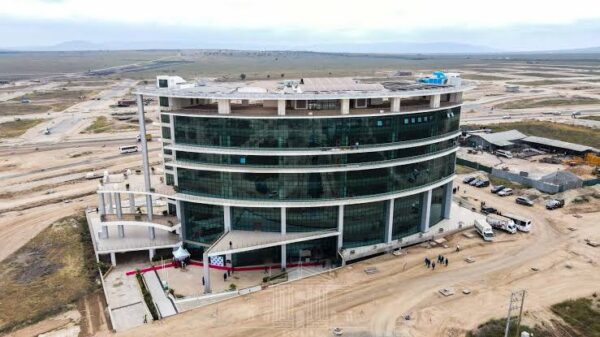WARSAW, Nov 1 – Two decades after the collapse of communism, Central European states have undergone an unprecedented metamorphosis from command to market economies that experts say was never guaranteed to succeed.
"We all did succeed. But at the time, success was by no means a given," Poland\’s Finance Minister Jacek Rostowski said at a recent regional economic summit in Krynica, southern Poland.
The largest of the 10 new ex-communist EU members, Poland was the first to tackle deep systemic reforms in 1990.
Today it is the only country in the 27-member EU that has maintained economic growth through the global recession and is expected to top both the EU and the 30-nation OECD grouping with one percent growth in output this year.
The upheaval of economic transformation crushed communist-era industrial jewels. Ironically, Poland\’s Baltic Sea shipyards, the cradles of the Solidarity trade union that was key to communism\’s demise in the country, are today themselves on the verge of collapse.
A handful of communist-era industries that were either partially or entirely privatised have flourished.
France\’s Renault took over Romania\’s Dacia automaker while Volkswagen bought the Czech company Skoda. Polish fuels company Orlen and Hungary\’s MOL have emerged as the region\’s major players alongside foreign competitors.
"To change the market economy to the central planned economy is very easy, like changing an aquarium into fish soup, but to do the opposite is as difficult as making an aquarium out of fish soup," says Ivan Miklos, the father of the Slovak reform drive.
While all the countries shared the objective of a market economy, their points of departure, strategies and pace of transformation varied widely.
Hungary, Czechoslovakia and East Germany were regarded as communist-era lands of milk and honey by people in Poland where rationing was widespread and inflation soared to 750 percent in December 1989.
The Baltic trio of Estonia, Latvia and Lithuania which regained their independence from the Soviet Union in 1991 had to build their economies from scratch.
With the USSR gone, "we had no idea where we could export our products," recalls Kazimiera Prunskiene, Lithuania\’s first post-independence prime minister.
Poland opted for the equivalent of an economic Big Bang as of January 1, 1990.
"What was called shock therapy were rapid, broad-based reforms which tackled hyperinflation, so you had to put down this fire quickly," Leszek Balcerowicz, the father of Poland\’s no pain, no gain economic transformation told AFP.
Next came "comprehensive liberalisation and reasonably fast, deep institutional change like privatisation, setting up the stock exchange, setting up an independent central bank," he said.
Hungary took a more relaxed approach, launching its reforms in 1992 while Bulgaria began its privatisation drive as late as 1997.
"The former East Germany is the exception. It didn\’t need to do it all alone because it had a rich big sister that took it under her wings," explains Karl Brenke, a German reunification specialist at the DIW economic research institute.
Well-connected ex-communists often profited unfairly from the massive restructuring which in many cases saw unemployment surge, a new phenomenon in the countries where under communism, working had been compulsory.
Joblessness in the former East Germany stands at twice the rate in the former west of the country, while welfare benefits now make up about 40 percent of the income of former East Germans.
Coal mine closures in Romania saw 90,000 miners lose their jobs, while new restructuring moves have slated another 48,000 job cuts in the sector by 2012.
"No Western government would have survived even six months with such harsh measures," economist Witold Orlowski, an expert at accountancy firm PricewaterhouseCoopers, told AFP.
"Without people\’s resilience, it would have been impossible to put Humpty Dumpty back together again."


































